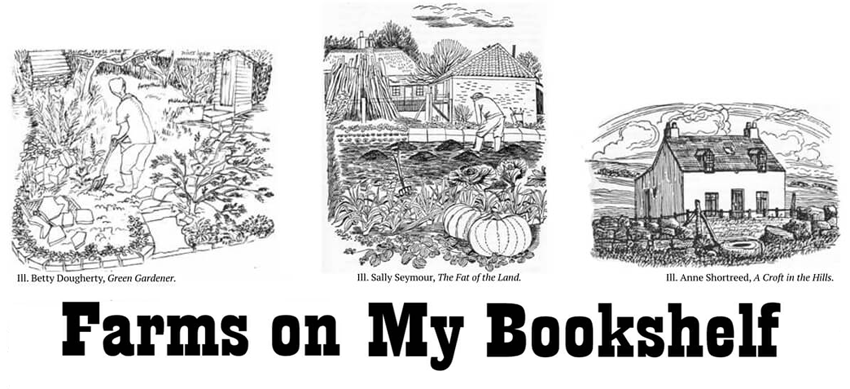I know I set out the „rules” of my collection in my first post, but some exceptions have been allowed in. This is one of them. The book was translated from the Norwegian and published in 1940. The title page states it is for „ 14 and over”. Annik Saxegaard was a prolific writer and published many books, both in Norwegian and in German. An Hour by Bus is the story of four girls. Tordis, a medical student, Bente (working in an office) and Ingjerd (married to a sailor and also working in an office) are tired of landladies and decide to live together. They find a house for rent in a village „an hour by bus” from town.
This being the 30’s they cannot look after themselves so Tordis askes Helle, her cousin, to become their housekeeper, for 40 Kroner per month. She accepts and it is Helle who tells the story (in a strange combination of old-fashioned Dutch and badly translated Norwegian).
The house had no running water and housekeeping is a lot of hard work. Helle writes: „I, the youngest of them all, will have to be a kind of mother to them”. And this is what she does: sacrificing herself by working day and night, saving money by doing the laundry herself and catching fish in the lake. She grows vegetables and fruit.
There is drama: Ingjerd has a baby, and her husband only just survives a shipwreck. He returns and he, Ingjerd and their baby move into their own home. Bente leaves too, to get married. Actually, to do a domestic science course and work on her trousseau first. Helle becomes desperate: she will be left on her own, because she has red hair and freckles, likes to cook but considers herself too stupid to do anything else. By this time she is even refusing her salary. Fortunately a Man knocks on the door at the right time and all is well. Only medical student Tordis is determined to stay single.
I know this book was written in the 30’s, but even so it is hard to stomach at times. I suppose that at the time, the girls might have been seen as enterprising, for setting out on their own, and employing a maid would have been normal.
I love the domestic detail, and of course, the cover.





